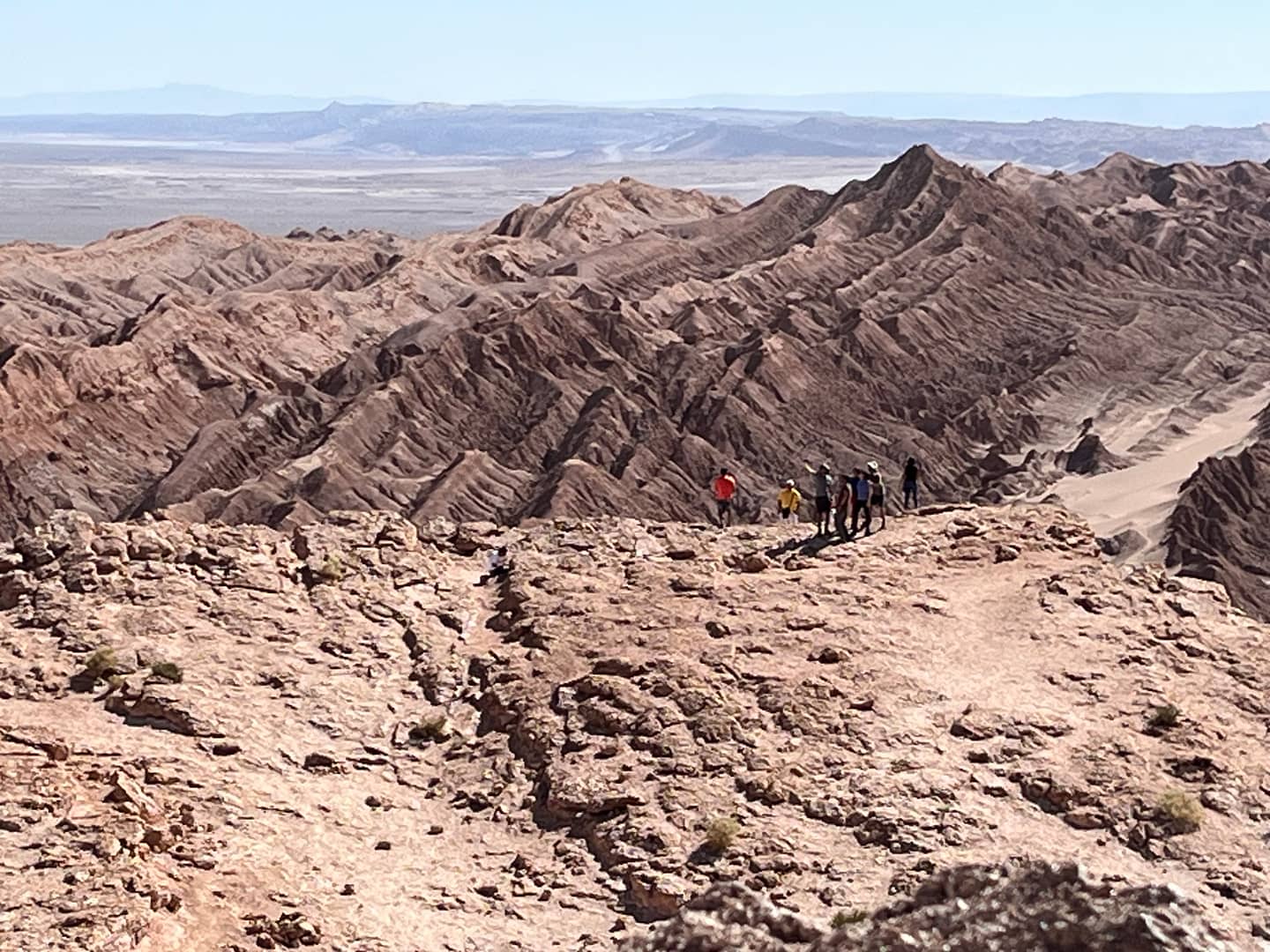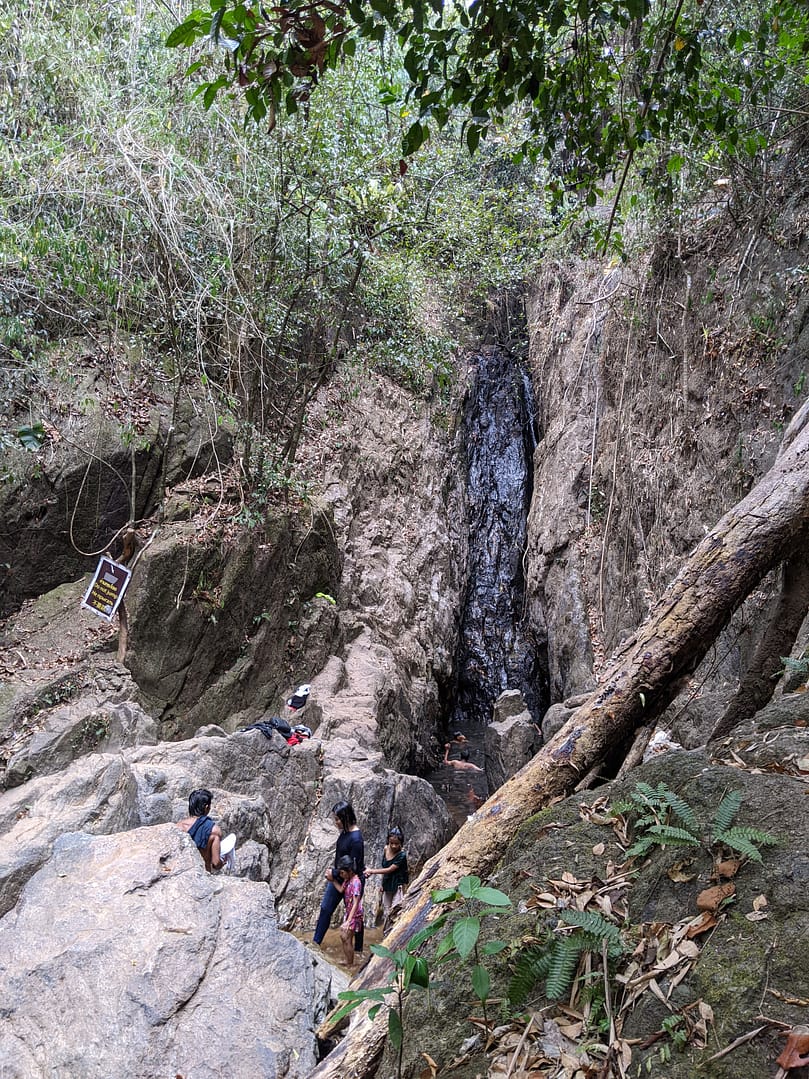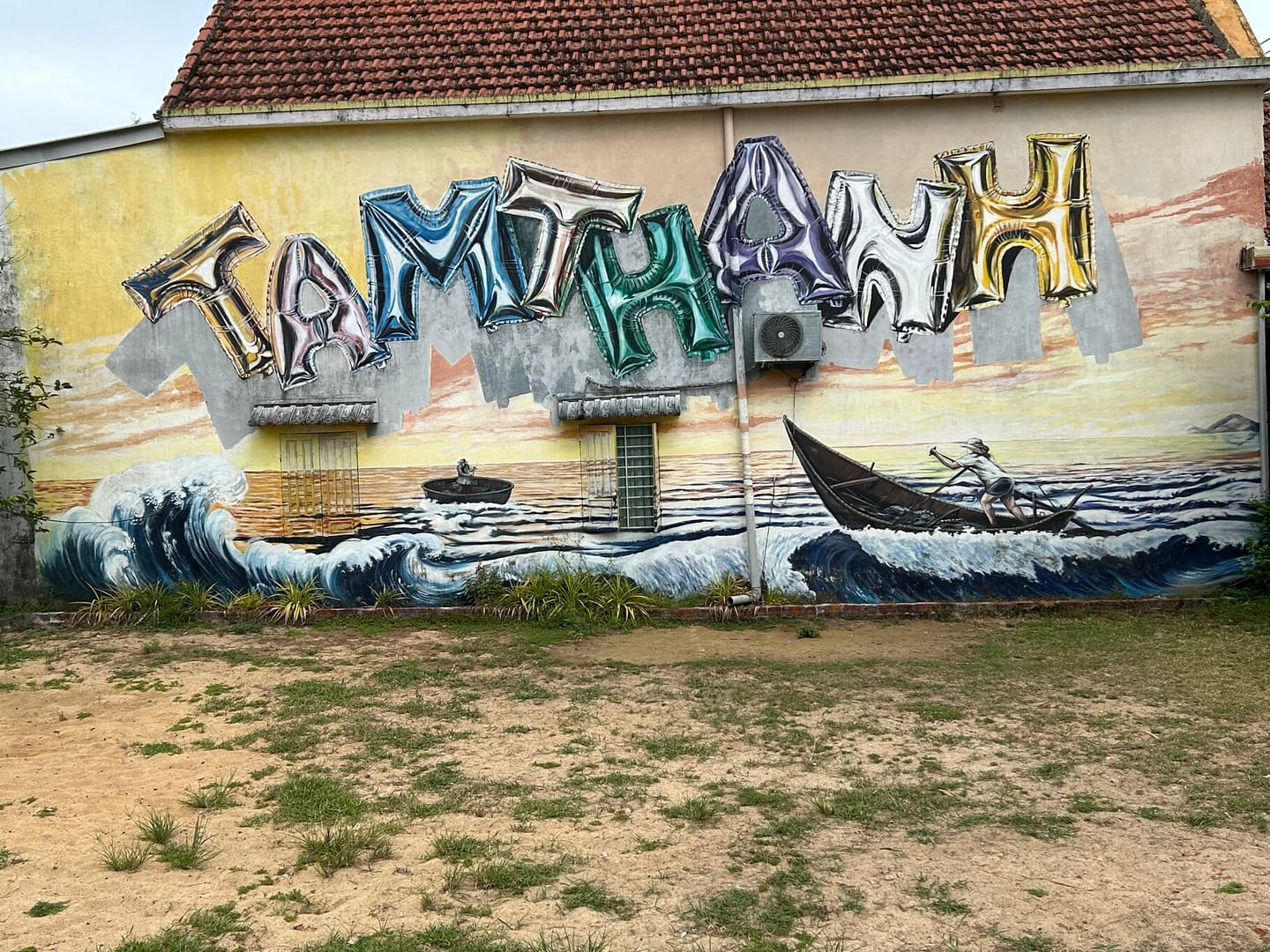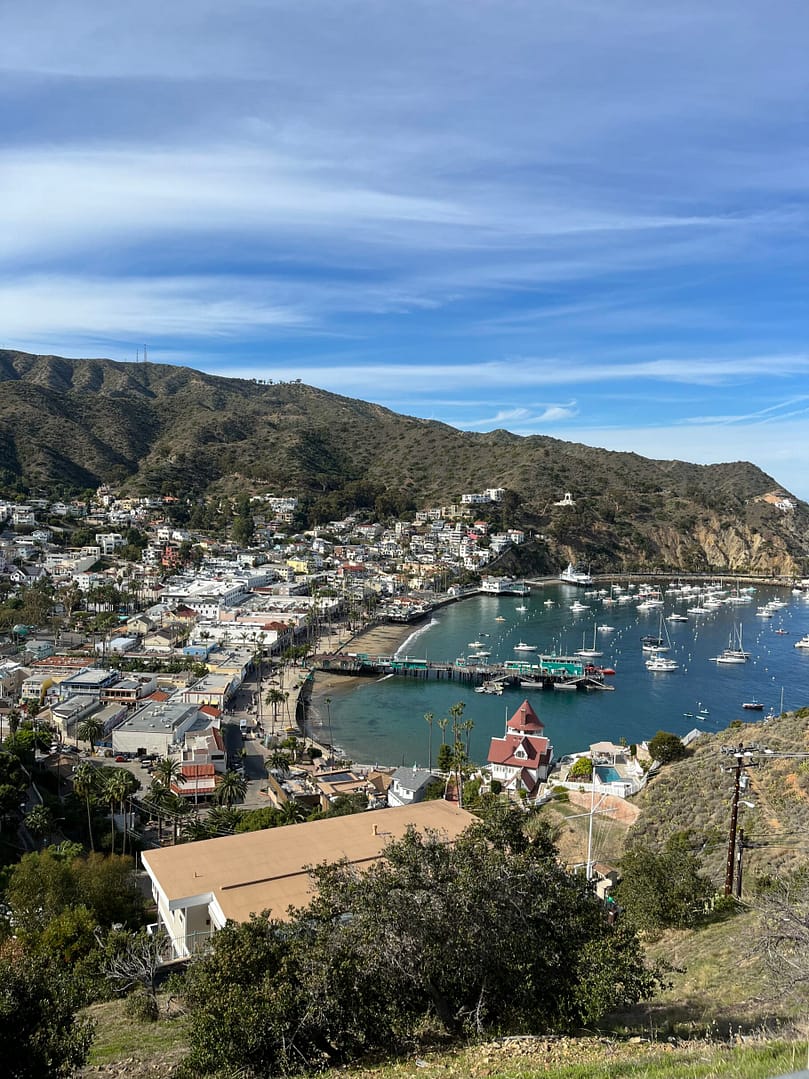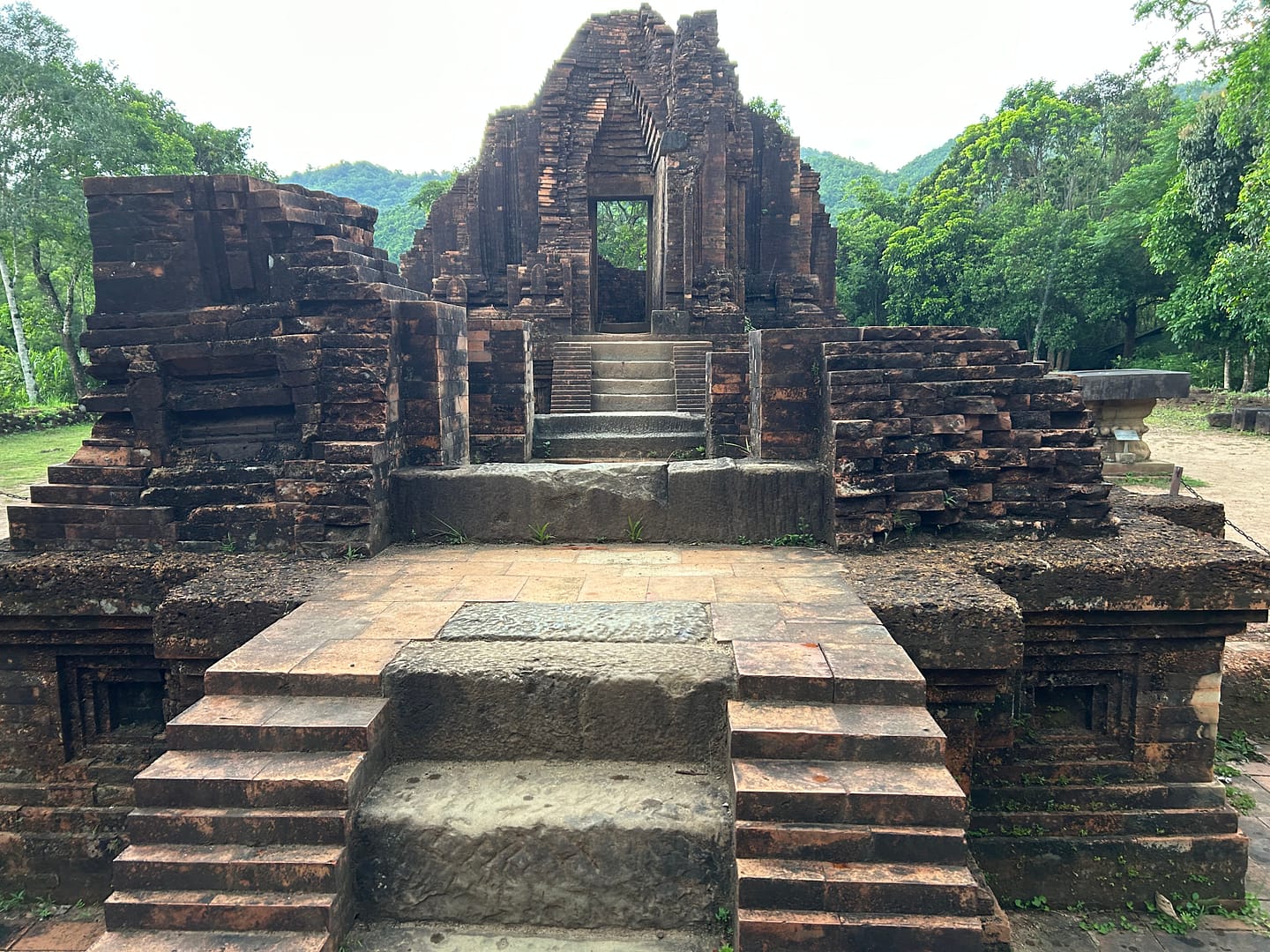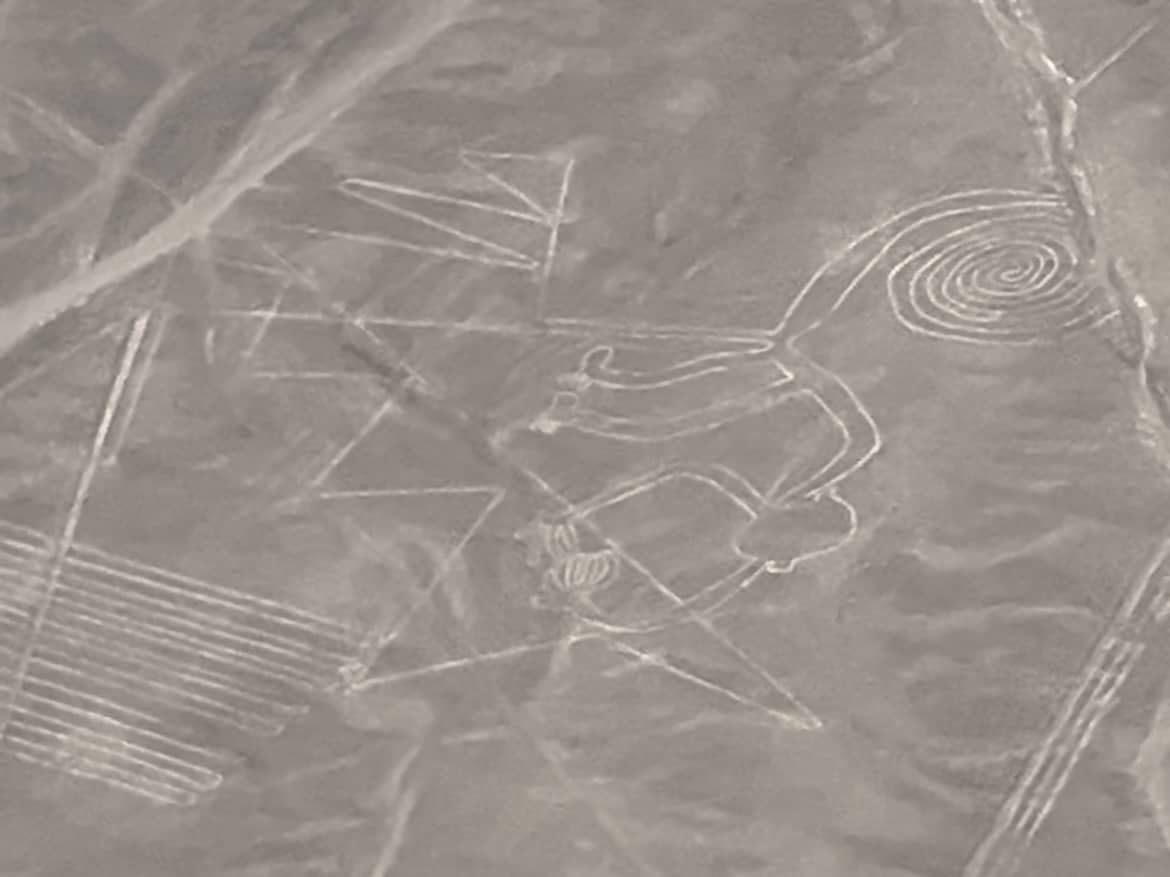During our South American Adventure, we saw many stunning landscapes – the Valley of the Moon in the Atacama Desert, the colorful murals of the “Jewel of the Pacific” Valparaiso, the city of Rio de Janeiro spread out beneath Christ the Redeemer. Of all of these, there was one vista that made me stop in my tracks: my first view of the Iguazu Falls.
The Iguazu Falls
If you’ve never heard of Iguazu Falls, you can be forgiven. Niagara Falls has the prime spot in the hearts of most North Americans, and it gets over seven times more visitors per year. But by all other measurements, Iguazu beats Niagara hands down. Iguazu Falls has an incredible 275 individual waterfalls. It is more than 1.6 miles wide – over 2½ times wider than Niagara! The longest drop, Devil’s Throat, is 262 feet tall. Not quite as tall as the Rainbow Falls in the Victoria Falls system (354 feet tall), but impressive nonetheless.
Location of the Iguazu Falls
Iguazu Falls lies on the border between Argentina and Brazil. Paraguay is only a few miles downstream from, but out of sight of, the falls. Both Argentina and Brazil have developed national parks to allow visitors to appreciate the splendor of the falls, while protecting the surrounding ecosystem.
Best Side of the Iguazu Falls
To truly appreciate the grandeur of Iguazu Falls, you should plan to spend a full day visiting each side. Our recommendation is to visit the Brazilian side first, as this will give you the best panoramic view of the falls. Then, travel to Argentina, where their national park has established many boardwalks that weave in and out of the waterfall system.
How to Get to Parque Nacional do Iguaçu, Brazil
Yes, you read that right. Iguaçu, not Iguazu. It’s the Brazilian spelling!
The Brazilian Parque Nacional do Iguaçu is about 25 minutes from the center of Foz do Iguaçu. Local Bus 120 goes to the park and there are several stops along Highway BR469. The bus runs about every 30 minutes and costs 5 BRL ($1). Alternatively, you can take an Uber for about $6 each way.
Getting Around the Brazilian Iguazu Falls
Once at Parque Nacional do Igauçu, you can easily buy tickets at one of the self-service kiosks near the entry. The machines were easy to use, but if you have questions, there are several salespeople ready to help in your language of choice. Tickets can also be purchased online, but you must still stand in line to validate them, so there was no advantage of doing this. A standard ticket is 100 BRL ($20).
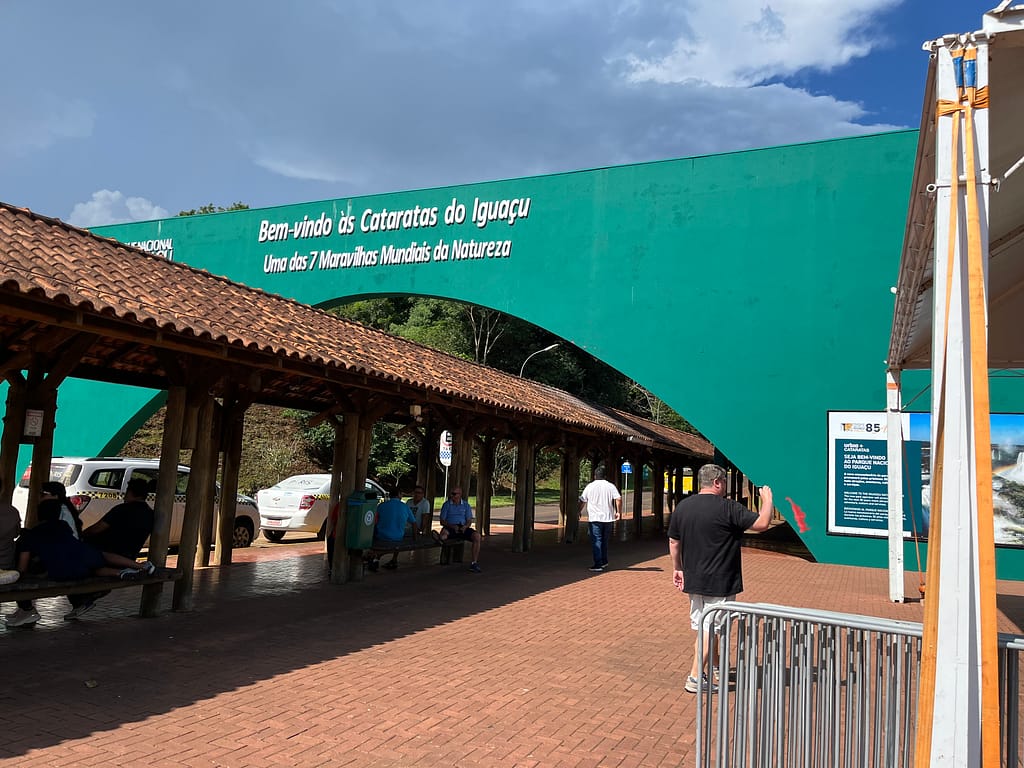
From the visitor center, you will take a 15 minute park bus to your trailhead. Many of the buses are double-deckers, with an open top deck. This is the best place to sit to spot wildlife on your way to the falls.
The first bus stop is for the Macuco Safari, a multi-vehicle adventure culminating in a boat ride into the waterfalls. The ticket for this separate from the park entry fee and costs 386 BRL ($77).
The second bus stop is in front of the Belmond Hotel das Cataratas. (If you stay here, you get after-hours access to the park.) Across from the hotel is the trailhead for the Iguaçu Waterfalls Path. This nearly 1-mile trail follows the Iguazu River upstream towards Devil’s Throat, a long narrow canyon through which half of the river flows. In the final part of the trail, a boardwalk leads out into the water. You can stand a few hundred feet away and watch the water plummet over the falls. You will definitely get wet!
The final bus stop is at the Porto Canoas building. Here you will find food, souvenirs, and restroom facilities. There is also an elevator down to the level of the Devil’s Throat boardwalk, for those who do not want to take the Igauçu Waterfall Path.
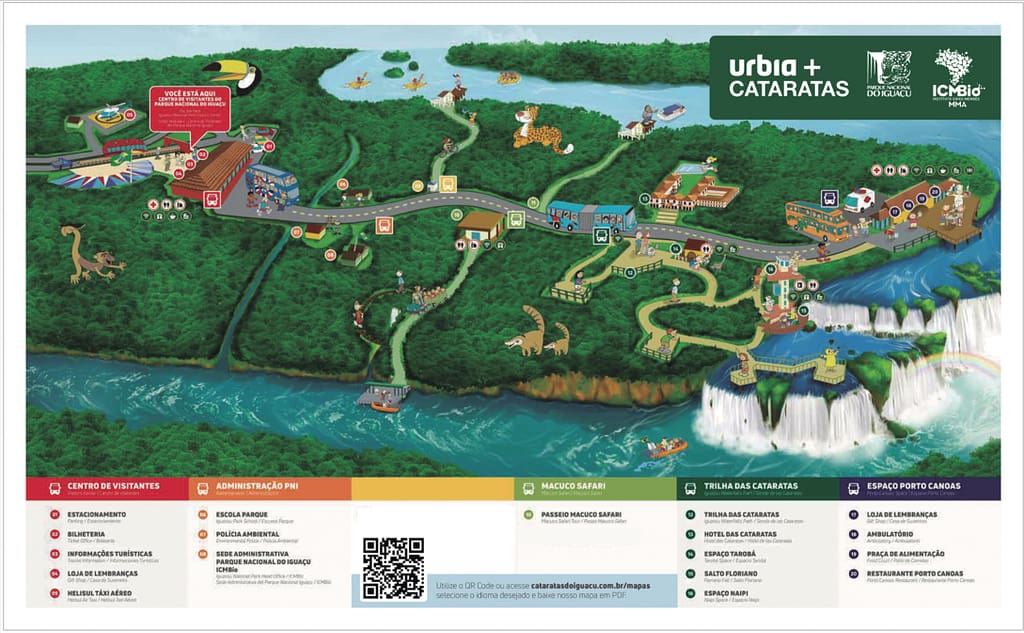
Our Experience at the Brazilian Iguaçu Falls
We arrived at Parque Nacional do Iguaçu a little after 3:00 PM. It had rained earlier in the day, but the sun came out a few hours before and looked like it was going to stick around. Whether due to the weather or something else, there were only a dozen tourists at the visitors’ center when we arrived. With no lines to wait in, we hopped on a bus to head to the trailhead.
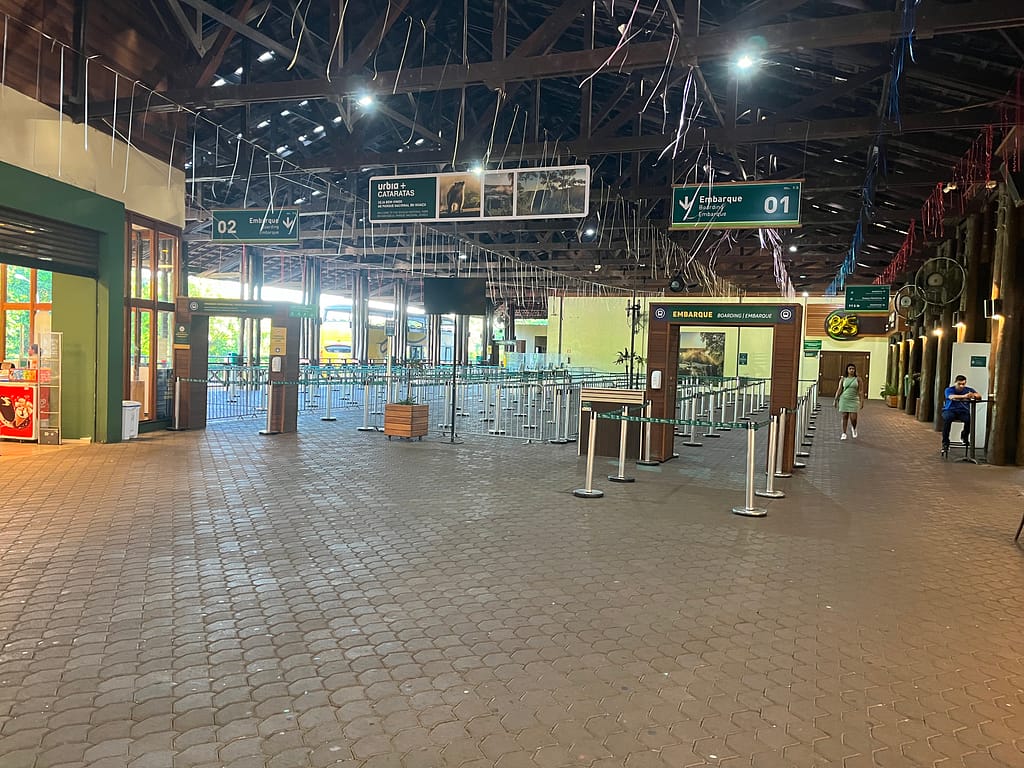
My First View of Iguazu Falls
To be honest, the bus ride out was not as exotic as I had imagined. If you ignored the occasional palm tree, the jungle looked similar to some of the forests in Minnesota – just much hotter and more humid. I thought I might spy a jaguar, a tapir, a pair of toucans, or a flight of butterflies… nope, nada. Joe saw a lone coati, but I missed it.
After about fifteen minutes, the bus stopped outside of the ornate Belmond Hotel. Everyone piled out at once, eager to see the falls. We followed the path to the left, intent on gaining a bit of space from the crowd. And that’s when, through a break in the trees, I caught my first view of the Iguaçu Falls. I literally stopped in my tracks.
It was stunning.
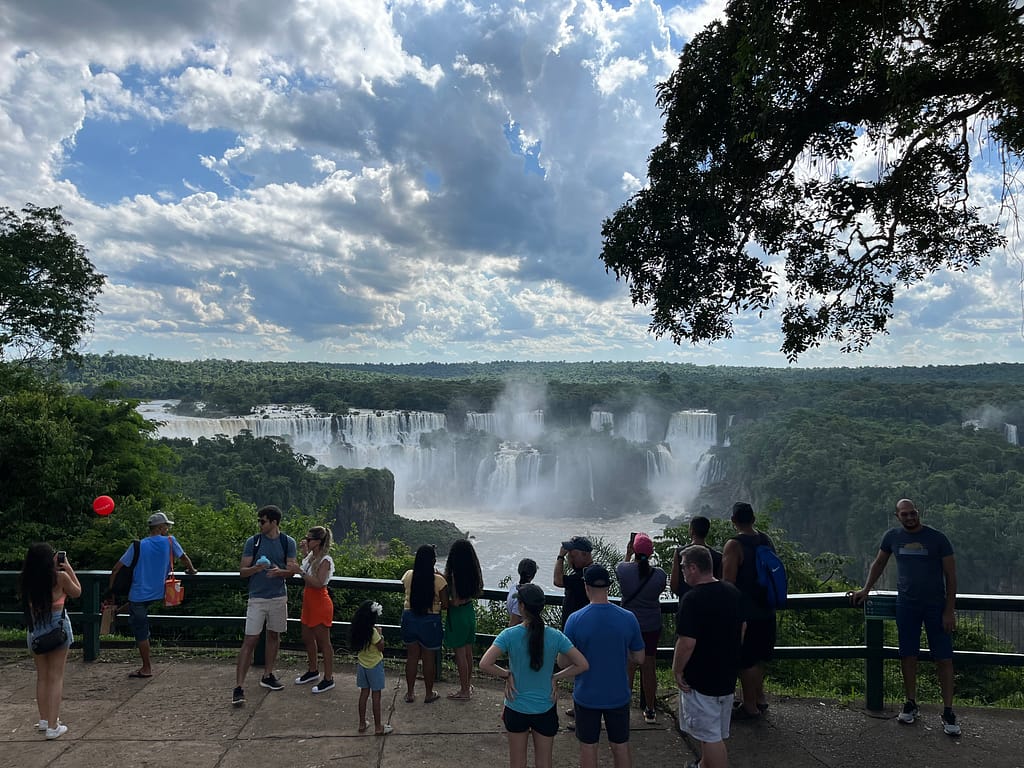
The Iguazu River before the falls is quite wide. At the headwaters, the river hooks around in a “J” shape, creating a long perimeter over which the water plummets. The Brazilian side is higher than the upper portion of the river, so from our vantage point we were looking slightly down upon the falls. As a backdrop, a verdant jungle stretched into the distance as far as the eye could see.
The Waterfall Trail
After ten minutes of awe, we tore our eyes away from the stunning panorama and continued on the trail. For the most part, it was a narrow asphalt path just wide enough for a couple to walk side-by-side – as long as no one wanted to pass. But despite the vacant feeling at the visitor center, there were plenty of people on the trail. Every few feet, there was a new view that was so amazing that somebody had to stop for a picture (or usually, a selfie). The result was that, despite the heat, humidity, and slight incline of the trail, it wasn’t too difficult because, between the people and the views, it was impossible to move quickly.

I wasn’t completely disappointed in my hope for some interesting wildlife. We saw several large Argentine tegu lizards, and a few smaller western collared spiny lizards. We didn’t see toucans, but there were a few other interesting birds that flew away too quickly to identify. And there were butterflies, just not kaleidoscopes of color flitting around as I had imagined.


The Devil’s Throat Boardwalk
After a little over half a mile, the trail began to descend more steeply down into the canyon called Devil’s Throat. There was a series of switchbacks and the view was briefly obscured by the jungle trees. But the roar of the falls got louder and the air became full of mist. Then we turned the corner and found ourselves right next to the break in the falls, a tumultuous pool separating the upper falls from the lower ones. Here, the national park has built a metal boardwalk that stretches out over the water.
Walking out over the falls was a truly unique experience. The roar of the water was so loud that it was impossible to have a conversation. We were enveloped in mist, and the tiny water droplets suspended in the air created a complete, 360 degree rainbow. What I found surprising was that, amid this truly epic force of nature, plants had still found a foothold. Water rushed through the pool, from the upper falls on its way over the lower falls, but there were small islands of basalt rocks that withstood the force. On these tiny islands, vibrant green grasses grew vigorously.

Iguaçu Falls had one more surprise for us. We exited the boardwalk and headed towards the Porto Canoas building that overlooks the area. Here, we were able to get right next to the water as it descended the headwaters in the first set of falls. The thundering rush of power was incredible.
To return, we rode up the panoramic elevator in the Porto Canoas building. We had nearly overstayed our welcome, and the park rangers were all ushering us towards the last bus back to the visitor center. What a day!

How to Get to Parque Nacional Iguazú, Argentina
The Argentina Iguazu Falls National Park is about 30 minutes from the center of Puerto Iguazú. There is a bus that goes from the central bus terminal to the national park.
Getting to the Argentina Side of Iguazu Falls from Foz do Iguaçu
The Argentina side of the Iguazu Falls are not to be missed! If you are staying in Foz do Iguaçu, Brazil, you will first need to cross the border. For a first-time visitor, this seems intimidating. Keep in mind that hundreds of tourists do this every day.
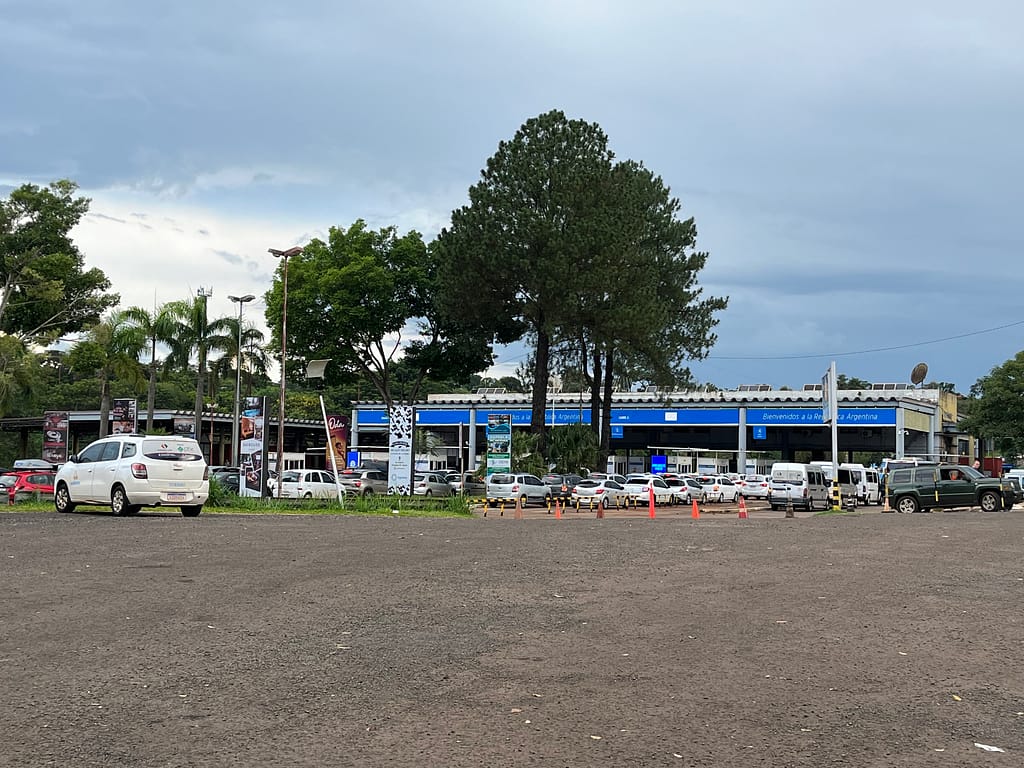
There are three ways to reach Iguazu Falls from Foz do Iguaçu. The easiest and most expensive is to sign up with a private transfer service. For a steep fee, someone will escort you every step of the way, there and back. We found several companies advertising this service for 500 BRL ($100) per person.
The most complicated, longest, yet least expensive way involves taking a series of buses. The Brazilian and Argentinian immigration control offices are nearly two miles apart. The buses won’t wait for you; you must take a different bus or walk. Your total investment will be about $15 per person and at least two hours each way.
The compromise between these two options is to hire a taxi to transport your group from your accommodations to the falls. They will likely make arrangements with a partner in Argentina, and hand you off to this person at the border. The system sounds complicated, but works smoothly and costs 350 BRL ($70) for a regular car. Payment is made at the end of the day, so you know they won’t abandon you!
Our Experience Getting to the Argentina Side of Iguazu Falls from Foz do Iguaçu
When we first arrived at the airport in Foz do Iguaçu, we met Marlos, a good-natured Brazilian who drove us to our AirBnB. He struck up a conversation along the way to offer his driving services during our stay. This was serendipitous a few days later when we decided to visit Argentina. A private tour was out of our price range, but the bus sounded too complicated. A quick text to Marlos and he agreed to take both of us across the border, to the park, and back home, all for 350 BRL ($70).
We also wanted to exchange US dollars for Argentina pesos, rather than paying the park entry fee with a credit card. Argentina is currently going through a financial crisis, and the currency exchange rate is extremely unstable. It can change drastically from day to day. This can result in credit card charges much higher than anticipated; better to use cash to control your expenses. When Marlos picked us up, he agreed to help us with this, too. He made some phone calls in rapid Portuguese and assured us he had everything worked out.
We reached the Brazilian border, parked the car, and walked over to the immigration office. After waiting 15 minutes in a short line, it was our turn. The border patrol agent asked us which way we were going – into Argentina or into Brazil? They put an exit stamp in our passport and we were on our way.
We got back into Marlos’ car and drove for another five minutes. This was when Marlos explained he would be leaving us with another driver. We felt a bit deceived as this was the first he’d mentioned it. But by then we’d formed a good repoire of trust with him, and besides, there wasn’t much we could do. Marlos parked in a dusty lot a few hundred feet away from the Argentina immigration office, where another man, introduced as Saul, was waiting under a tree. Marlos and Saul spoke rapidly in Portuguese. I only caught “cambiar” (change) and “dinero”. And then Marlos waved goodbye.
Our new driver, Seoul, began talking animatedly in fairly good English as he walked us to the Argentina immigration office. He had taught himself exclusively by watching movies and playing video games. Honestly, an impressive accomplishment! He kept up a conversation through most of our trip to the falls and back, focusing on movies and TV shows but also veering into politics and soccer (which are sometimes the same in Argentina!).
At the Argentina passport control, we breezed through with a quick scan of our passport. Then Saul began looking for a money exchange. Since it was Sunday, most of the places were closed. We turned off the main road and drove onto some side streets. We were clearly foreigners in a strange place, and Joe and I both started to feel a bit nervous. Saul parked in front of a house with a locked wrought iron gate in front of the main door. The door opened but the gate stayed closed. Inside, we saw a bar lined with liquor bottles. A man appeared and said brusquely, “The rate is 1,100 pesos.”
Despite our extensive international traveling, exchange rates still perplex me. We deliberated as we tried to figure out the math. Now that I’m not under pressure, it seems pretty easy. One dollar was equal to 1,100 pesos. I had a fifty dollar bill, so that would get us 55,000 pesos. The park entry fee was 20,000 apiece. We needed 40,000 pesos; 55,000 would be enough. We handed our single $50 bill through the gate and the mysterious man on the other side handed us back a stack of pesos that was an inch thick.
Finally, on to Iguazu Falls. The rest of the drive was fairly uneventful. To pass the time, and to practice his English, Saul told us a story about a woman who had wandered away from the trail at Iguazu Falls several years ago. She got lost in the jungle and they could not find her when evening fell. The army, the police, the national guard – all were mobolized to search for her, but with no luck. Everyone feared the worst. After all, there are jaguars, pumas, poisonous snakes, and giant spiders in the jungle. But when dawn came, they found the woman on the side of the highway without a scratch on her. “Not a single scratch!” Saul repeated in amazement.
With the entertaining conversation, we reached the falls quickly. Saul admonished us to stay on the path, and especially to watch out for the coatis. He made sure we had his contact info for a return trip, and left us there at the entry. The falls were incredible, or in the words of Marlos, “muy, muy lindo”. We spent several hours exploring the trails, and when we were done Saul returned to pick us up as promised. We ran through the whole border sequence in reverse, with Marlos meeting us in the same dusty parking lot to take over on the Brazilian side.
Getting Around the Argentinian Iguazu Falls
When you arrive at the Parque Nacional Iguazú, you will see several ticket booths on the right side of the visitors center. Here you can pay with cash or credit card. Due to Argentina’s current financial crisis, it is better to pay cash. Tickets can also be purchased online, but you must still stand in line to validate them, so there was no advantage of doing this. A standard ticket is 20,000 ARS. Depending on the exchange rate you can get, this is between $18 – $25.
The Argentinian side of Iguazu Falls has more trail options than the Brazilian side. It would be difficult to do all of the trails in one day. If you are interested, you may return to the park and receive 50% off the entry fee on your second consecutive day.
In the Parque Nacional Iguazú, there is an open-air train to take tourists to different points. After passing through the turnstiles at the entry, there is a large area full of restaurants, souvenir shops, and bathrooms. It is a five minute walk through this area to reach the Estación Central. The train takes about 15 minutes to reach Estación Cataratas, which is the access point for the Circuitos Superior and Inferior (Upper and Lower Trails). You can get off here or stay on the train to reach the final stop, Estación Garganta, the access point for the Devil’s Throat viewing platform.
Circuitos Inferior & Superior
The most popular trails are the Circuitos Inferior and Superior. These are both loop trails about one mile long. The Circuito Inferior is the lower trail which winds through the jungle on a series of paths and metal boardwalks. You are able to get quite close to several of the waterfalls, and also get some great panoramic views of Isla San Martin and the section of the falls behind the island. The Circuito Superior follows the upper level of the falls, using another series of metal boardwalks to pass over the headwaters and above the drops.
Sendero Verde
The Sendero Verde (Green Trail) is a short, paved ½ mile trail connecting Estaciónes Central and Cataratas. It is possible to use this to reach the Circuitos Inferior and Superior, rather than the train. It does not pass near any waterfalls, but you can see coatis, monkeys, and other more common animals along it.
Sendero Macuco
The Sendero Macuco is for more intrepid hikers. It is an out-and-back trail leading to the Arrechea waterfall, a distance of 2 miles each way. This trail is the most natural setting accessible to visitors in the park, and it is possible to see the biggest variety of flora and fauna here. However, it is sometimes closed by rangers, depending on the trail condition or recent jaguar sightings.
Garganta del Diablo Trail
The Garganta del Diablo trail is at the last train station and is the furthest point in the park. This is an out-and-back trail leading to a platform that overlooks Devil’s Throat, the tallest drop of the Iguazu waterfall system. The trail is about ⅔ of a mile each way. Note that the Devil’s Throat trail closes earlier than the rest of the park, at 3 PM, and the train will stop running there after it closes. Plan accordingly if you want to do this trail.
Isla San Martin
There is one final trail on the Argentinian side of Iguazu Falls, and that is the trail of Isla San Martin. The Parque Nacional Iguazú operates a ferry boat to take visitors to the island located at the base of the falls. There is a ½ mile trail that offers unique views of the falls. The ferry does not run everyday, depending on the condition of the water.
Our Experience at the Argentina Iguazú Falls
We left our AirBnB in central Foz do Iguaçu at around 12:30 PM. After passing through two immigration control offices, a shady money exchange, and a drive through the jungle, it was almost 2 PM when we arrived at Parque Nacional Iguazú. We handed over most of our stack of black-market Argentinian pesos to the ticket saleswoman and headed into the park.
Like the entry area on the Brazilian side, the park appeared to be built to handle large crowds, but there were not that many people in this area. We passed an amphitheater, a small museum dedicated to the history of Iguazu Falls, an upscale restaurant, a ticket booth for the speedboat ride into Iguazu Falls, two restroom buildings, a town square with artisans selling handicrafts, and a convenience store stocked with beverages. Finally, we came to the train station where a train was about to depart. We quickly hopped aboard.
The train took us on a 15 minute journey through the jungle. We scoured the undergrowth looking for coatis, monkeys, or toucans, but we saw nothing. When we reached Estación Cataratas, most of the passengers got off. We followed the crowd down the path and had our first wildlife encounter: a band of coatis. A few of the cute fellows ran brazenly through the crowd, hoping for food. There were multiple signs throughout the park warning against feeding these pesky beggars, but clearly they knew a food source when they saw one!
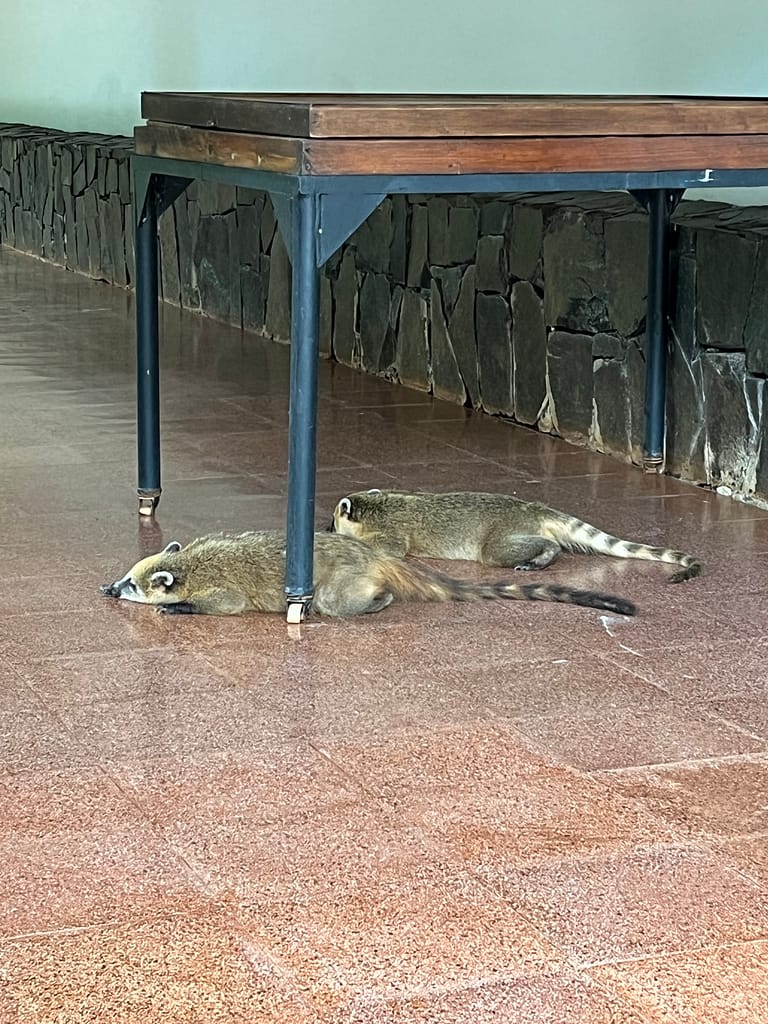
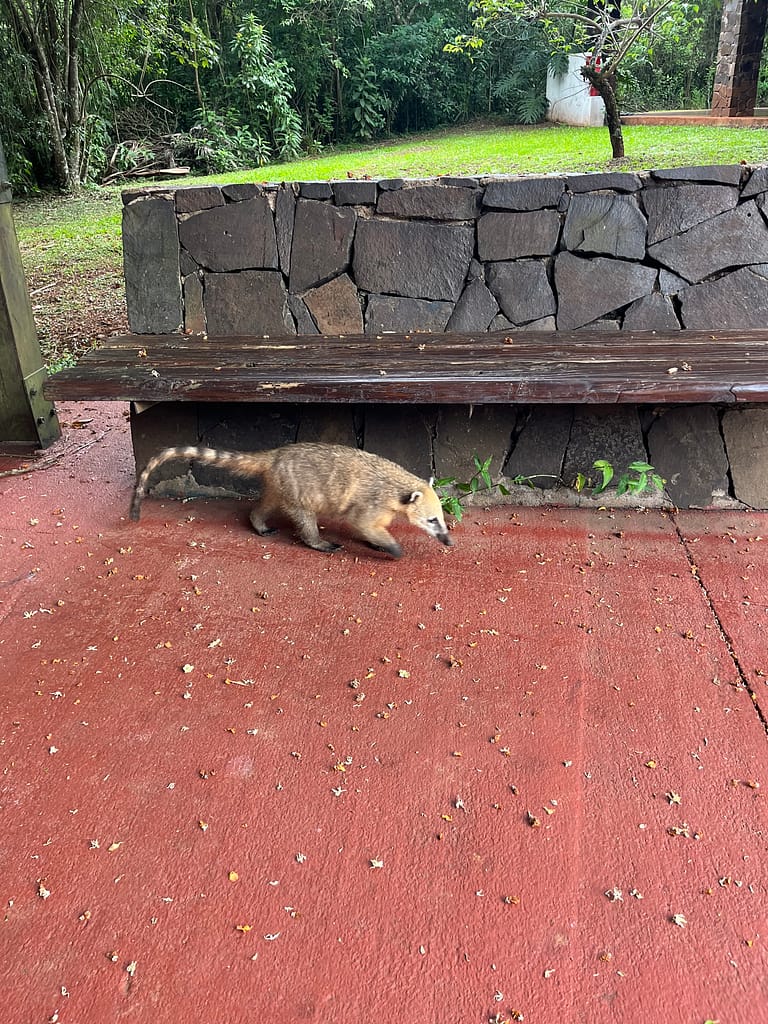

A hundred feet or so down the trail we saw the other animal that the signs warned us about: black capuchin monkeys. A small troupe was hanging out in the branches near the trailhead that led to the Superior Circuit. I saw one adult with a baby clinging to its back, and a few juveniles swinging between tree limbs farther away. Later on in the trail, a lone monkey swung through the vines and across the path right in front of us!
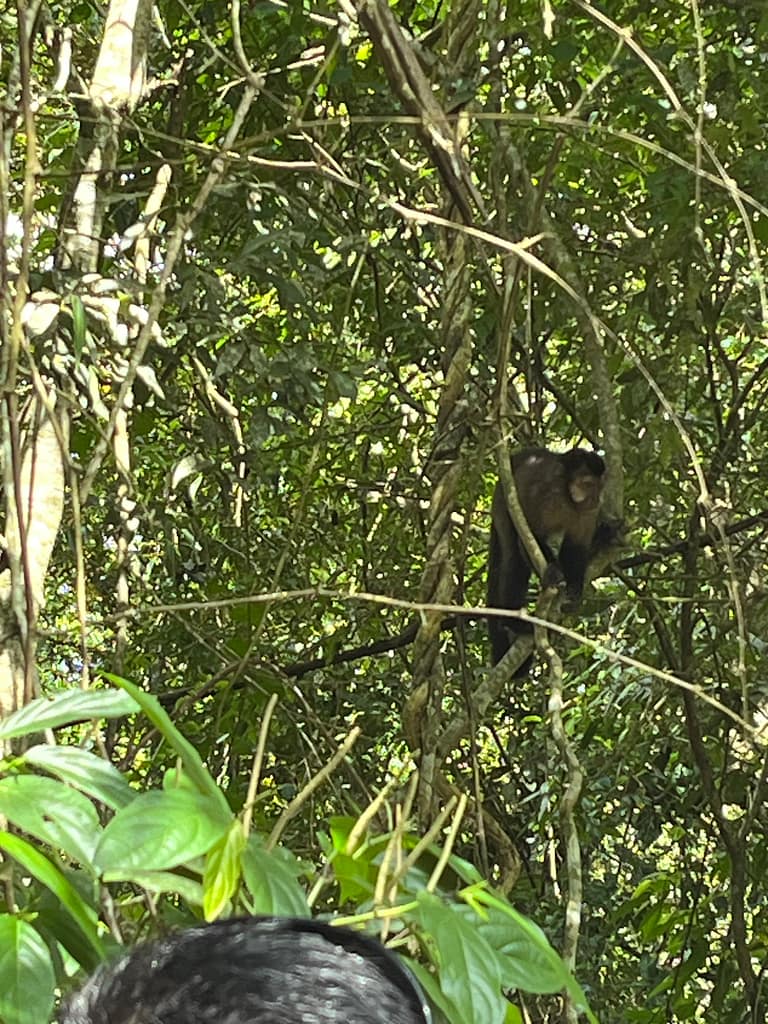

Apparently both the coatis and the monkeys are known to steal visitors’ belongings. Rumor has it there is a store deep in the jungle where the animals can barter for the stolen goods.
We continued down the path following the signs for the Circuito Inferior, which we had decided to do first. Along the way we passed a tall building that looked like a lighthouse. It was the historic Torre Tanque, a lookout constructed for Hotel Cataratas in the 1920s. The old hotel is still there, but no longer operatable. There is a new hotel, Gran Melia, for guests who want to stay overnight at in the park.
A short distance after the Torre Tanque, we entered the Circuito Inferior. The whole time, we’d been seeing more and more tourists, and by this point I’d definitely call the park crowded. The Upper and Lower boardwalk trails are both one-way loops. The trail itself is rather narrow, and it is difficult to pass people except at points where there are wide viewing platforms. We joined the single-file line of people following the trail through the jungle.
The first two waterfalls along the trail are Saltos Lanusse and Alvar Núñez. The boardwalk goes right over the upper edge of the falls, so you can peer over to see the water rushing by below. These falls are smaller than the ones we encountered later along the trail. Rather than a long drop, the water tumbled over boulders and branches as it made its way down to rejoin the river below.
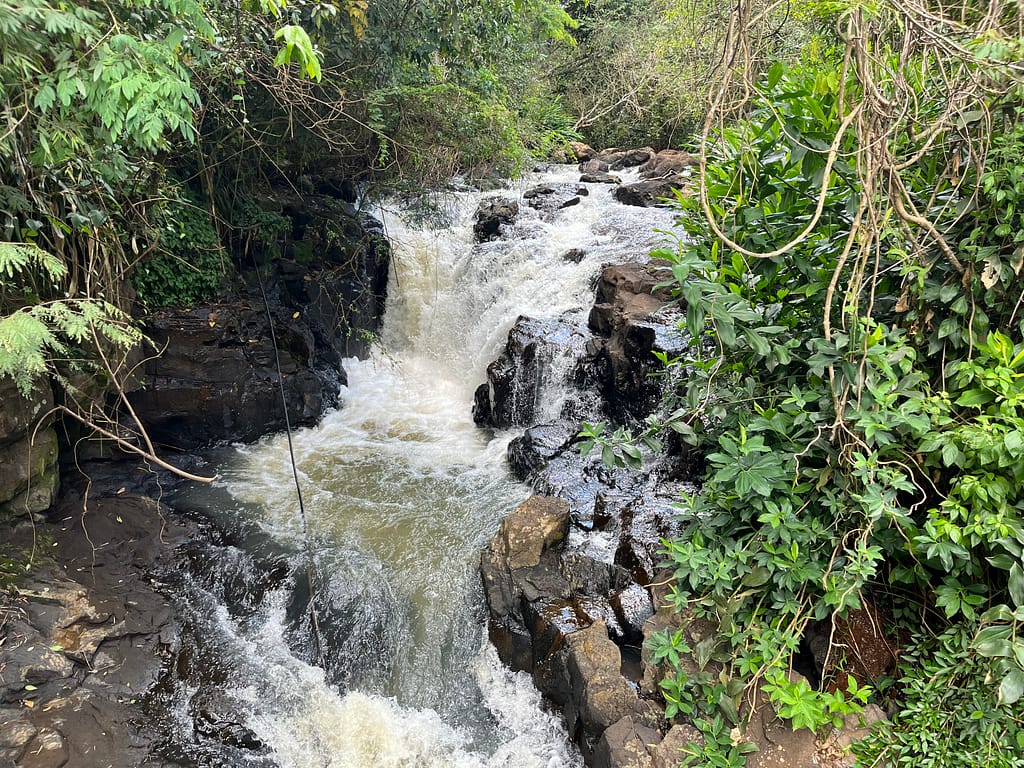

We rounded a corner as the trail ran along the edge of the Iguazu river. There were several viewpoints of the main portion of the falls that lies just behind Isla San Martin.
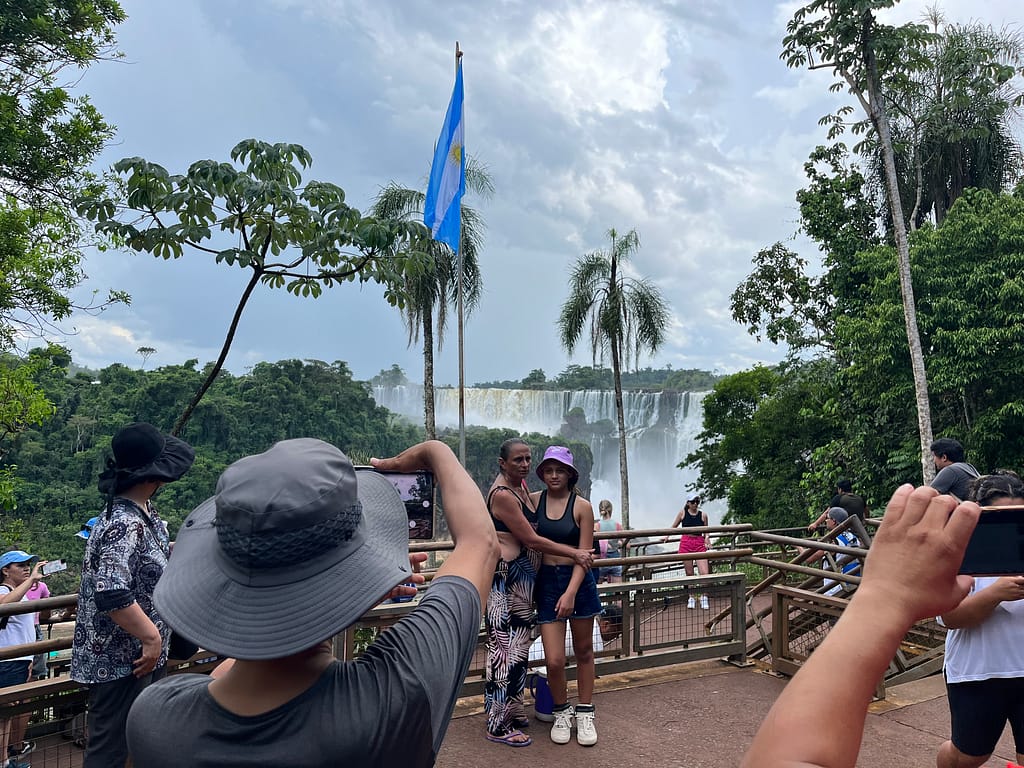
The best portion of the Lower Trail is where it runs out along the cliff to be right alongside Salto Bossetti. Here the mist from the waterfall sprays into the tourists and the roar of the water overpowers any conversation. Disappointingly, the last 200 feet of this trail was closed and we were unable to get the close viewpoint we’d hoped for.
There were two more waterfalls to check out: Salto Chico and Salto Dos Hermanas. Both had short side trails leading us to a viewing area closer to the falls. As we marveled at the picturesque falls, I noticed some people walking on a trail above the falls. “That looks cool,” I thought, “How do we get up there?”
We exited the Lower Trail at about 3:30 PM, a little over an hour from when we had started. Because a portion of the Lower Trail was closed, it took us less time than we had expected. We decided to try the Upper Trail as well. The park rangers close entry to this trail at 4 PM, so we speed-walked past the Torre Tanque to the trailhead.
Right away, I was happy we’d taken this trail. The Upper Trail passes above the Salto Dos Hermanas and the Salto Chico that we’d seen from below on the Lower Trail! It was so fun to see the falls from a different vantage point.
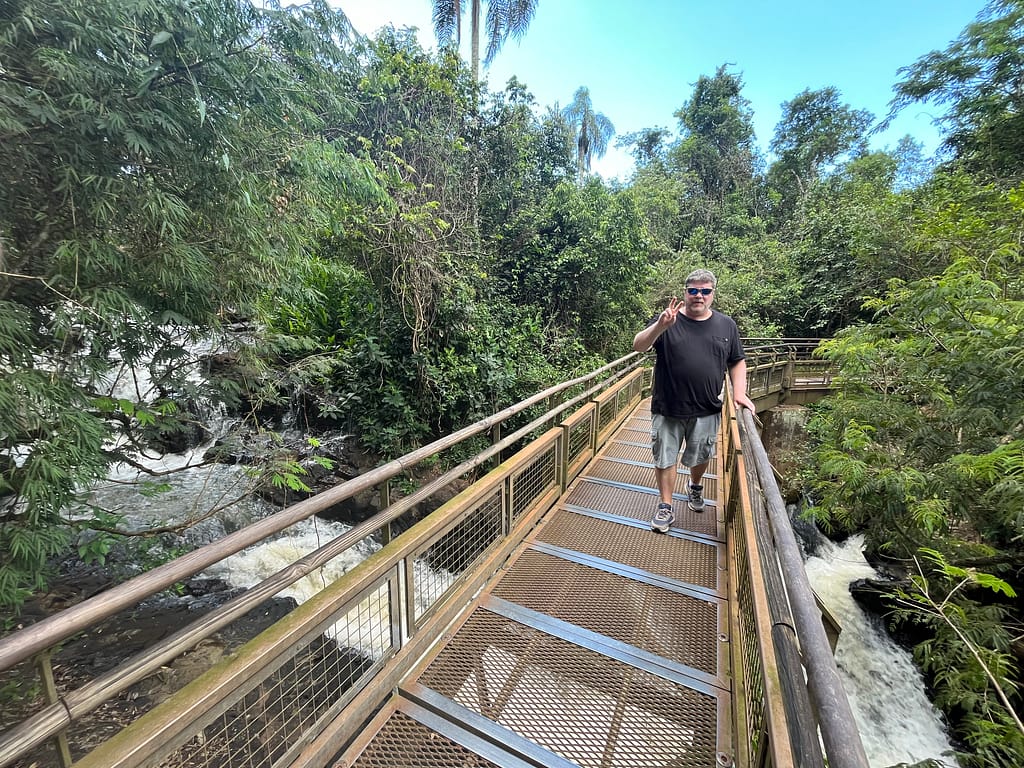
The Upper Trail goes out into the headwaters of the Iguazu Falls, with a viewing platform just above Salto San Martin. Unfortunately, this section of the trail was also closed. We headed back, passing over the many wandering inlets. The backwaters here ran a bit slower and we could see a variety of plant life. I was hoping for a snake, but no luck.
Again, a truncated trail had us completing the Circuito Superior faster than expected. The park literature recommends allowing two hours each for the Lower Trail and the Upper Trail. For us, with the shortened trails, it took 75 minutes on the Lower Trail and 30 minutes on the Upper Trail.
After all that hiking in the steamy jungle, we were hot and thirsty. We stopped by one of the food stalls and spent most of our remaining pesos on cold water and slushies. The orange slushie, a mix of mango and papaya, was the most delicious I’d ever had! Refreshed, we headed for the train and the ride back to the park entrance.
As we disembarked the train at Estación Central, we heard a loud “Tchhh-kk! Tchhh-kk!” We saw two tourists staring up into a tree, so we headed over to investigate. We spotted two toucans perched in the very top branches! What a great way to end our time at Parque Nacional Iguazú.
Our Advice on Visiting the Iguazu Waterfalls
When you land at the airport in Foz do Iguaçu, talk to a few of the drivers there and you will find someone that can arrange transportation to Argentina.
Don’t bother booking tickets in advance. Choose a day with good weather to visit, and buy your tickets when you arrive at the park.
Go to the Brazilian side first. This will give you a good panoramic view of the falls. You will have a better appreciation when you explore all of the falls on the Argentinian side.
The Brazilian side of the falls needs only 2-3 hours to fully explore. Go in the afternoon to avoid the crowds from earlier in the day. If you time it right, you can get to the Devil’s Throat viewing platform just before closing time.
Make sure to experience Devil’s Throat on the Brazilian side. That way you won’t miss too much if you don’t have time to visit it on the Argentinian side.
Pay attention to the trail closing times on both the Brazilian and Argentinian sides of Iguazu Falls. The parks are open until 6 PM, but park rangers will not let you enter some of the trails after a certain time.


